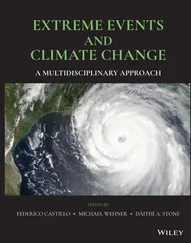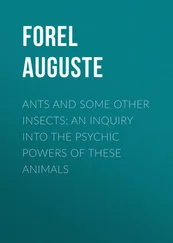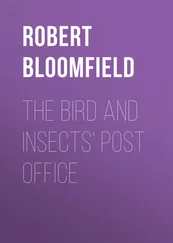Insects are both awful and awe-inspiring, certainly worthy of our respect and our study. They give us a window on the natural world through which we can see, and attempt to understand, the environment in which we live, indeed of which we are an integral part. The huge numbers of insects, and their depredations on human food and health, are sometimes bemoaned. In reality, they form a vast biomass, and it is a wasteful shame that insects form an insignificant part of the human diet. We may not eat them very often, but insects offer a more philosophical sustenance – food for thought. In their study, there is a veritable feast for the mind.
Richard Jones
London, September 2009
Oldest insect• Biggest insect• Longest insect• Whitest insect• Shiniest insect• Slimiest insect• Biggest blockhead• Most sexually dimorphic insect• Most mixed-up sexuality• Most bloated insect• Most seasonally dimorphic insect• Highest number of wings• Flattest insect• Most back-to-front insect• Longest ovipositor• Widest head• Brightest light generation• Most variable colour pattern• Bloodiest insect• Most beautiful insect• Longest head• Most streamlined insect• Loudest insect• Best hoverer• Ugliest insect• Largest jaws• Largest wingspan• Best camouflage• Most transparent wings• Hairiest legs• Snappiest jaws• Prettiest eyes• Most elegant eggs• Largest eye markings• Lightest footstep• Furriest insect• Most poisonous insect• Most heavily armoured insect• Longest wing tails• Best burrower• Smallest insect• Heaviest insect• Fastest flier• Fastest runner• Longest tongue• Smelliest insect• Most subterranean insect• Fastest wing-beat• Smallest egg• Largest egg• Spikiest insect• Biggest feet• Largest claws
| NAME |
Rhyniognatha hirsti |
| LOCATION |
fossil discovered in Aberdeenshire, Scotland |
| STATUS |
oldest known fossil of an insect |
Most insects are very small, very delicate and very edible, so the fossil record they have left behind is extremely poor. The majority end up as prey for other animals, bitten, chewed and digested away. Where their remains are not eaten, there are no large bones to be preserved, and even the toughest of insect shells are made of highly biodegradable compounds. As a result, it takes some pretty special circumstances for insect fossils to form, and they are thoroughly scrutinised when found. Or at least they should be.
Until recently, the oldest acknowledged insect-like fossil was an ancient relative of modern springtails. These are wingless soft-bodied creatures that are not now classed as insects but as a sister group within the subphylum Hexapoda (six-legged arthropods). The fossil was found in 1919 by the Reverend W. Cran in the old red sandstone deposits (also called the Rhynie cherts) at Rhynie in Aberdeenshire, Scotland, which date from 407-396 million years ago. It was finally described in 1926 by three paleontologists, S. Hirst, S. Maulik and D.J. Scourfield, who aptly named it Rhyniella praecursor.
Two years later the rock sample was re-examined by the Australian entomologist Robin Tillyard. He identified what had been thought to be a broken fragment of a Rhyniella head capsule as belonging to a different creature, which he named Rhyniognatha hirsti.
The specimen lay untouched in the Natural History Museum, London, until 2004, when it was examined again by evolutionary entomologists Michael Engel and David Grimaldi. Using modern microscopes, they were able to see the fossilised jaws in much greater detail, and made an astonishing discovery. The shape of the jaws – toothed, broadly triangular, with two bulges where they articulated against other sections of the mouthparts – showed that they were not from some ancient springtail, but from a true insect and probably one with wings.
The Rhynie cherts formed in an area of hot springs and active geysers, which contained fluids rich in dissolved silica. As the water cooled the silica crystallised out of the water to form the fossils for which the area is now renowned. Hot water is very damaging to insect wings and other soft tissues, so it is not surprising that only the tough jaws of this insect have been preserved.
| NAME |
Titanus giganteus |
| LOCATION |
Venezuela, Colombia, Ecuador, Peru, the Guianas, Brazil |
| ATTRIBUTE |
largest living insect |
In 1771, the Swedish naturalist Carolus Linnaeus described a giant beetle, and named it using his new scheme of binomial (two names) nomenclature: one name for the genus (Titanus) and one name for the species (giganteus). This name could not have been more apt for an insect that regularly reaches 17 cm (6.7 in) long. Linnaeus never saw the beetle itself. He coined the name after seeing an engraving of it in an encyclopedia.
The reason Linnaeus never saw one is that this was one of the rarest insects then known. During the 18th century, specimens were occasionally washed up dead on the shores of the Rio Negro, near Manaos in Brazil. The first living beetles were not found until 1958, when they were attracted to the street lights which were newly installed in the towns and villages in the area. Its early stages and life history are still unknown, but similar species have maggot-like larvae that feed in rotten logs.
There is still some doubt as to whether Titanus giganteus truly is the ‘largest’ insect. Few reliable measurements of living specimens have been taken. There is also little data regarding its weight – usually regarded as the key indicator of size by record-measuring organisations. As a result, four other beetles are contenders for the title. These are the shorter but stouter ‘Elephant’ beetles from South America – Megasoma actaeon (13.5 cm) and M. elephas (13.7 cm) – and the Goliath beetles from Africa – Goliathus regius (11 cm) and G. goliathus (11 cm).
| NAME |
Phobaeticus chani |
| LOCATION |
Borneo |
| ATTRIBUTE |
greatest length in body and legs of any insect |
One of the best ways to avoid being eaten is to hide, and one of the best ways to hide is to blend in with the surroundings using camouflage. Stick insects (also called walking sticks) have taken this to an extreme, and their pencil-thin bodies and pin-thin legs perfectly resemble the twigs through which they climb. So good at hiding have they become that some stick insects have acquired a trait that is a common evolutionary result of having no (or virtually no) predators – they have become very large.
For nearly 100 years, the record for the longest insect in the world was held by a specimen of a giant stick insect from Borneo, Phobaeticus (formerly Pharnacia) kirbyi. Its body was 328 mm (12.9 in) long, and from the tip of the outstretched front leg to the end of the back leg it measured 499 mm (19.6 in). This specimen had long been misidentified as the closely related P. serratipes , and it was only shortly after its true identity was established in 1995 that another huge stick insect was discovered. Ironically, this time it was a specimen of the true P. serratipes , found in Malaysia. It had a total length of 555 mm (21.9 in), although its body alone was slightly shorter than the famous P. kirbyi specimen.
Читать дальше












